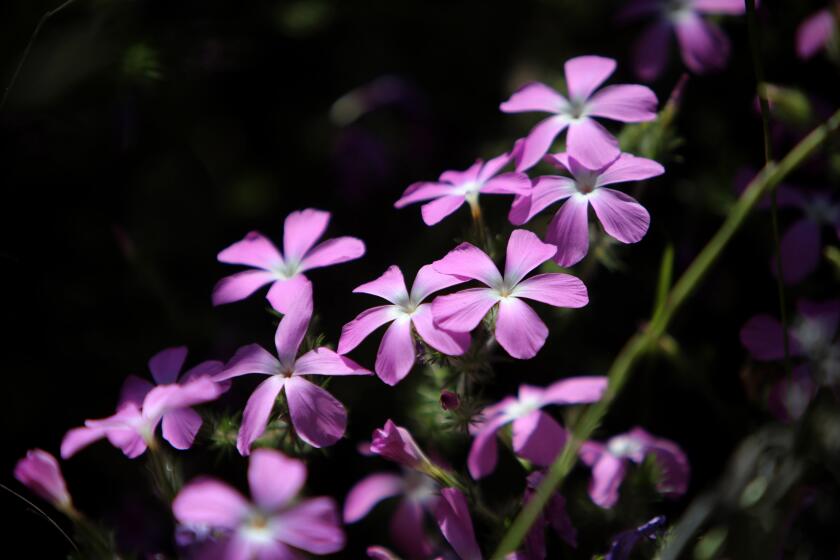Hidden Costs Come to Surface as Agriculturists Curtail Use of Pesticides
Pesticides have come under increasing question from gardeners and agriculturists in recent years. But is there a point of no return to their curtailment or elimination?
California Agriculture, published by the University of California’s division of agriculture and natural resources, devotes much of its May-June edition to fascinating questions raised by the scheduled, nationwide removal by the year 2001 of methyl bromide, a soil fumigant widely used in this country since the 1930s.
It is being phased out under provisions of the 1990 Clean Air Act regarding ozone-depleting substances. No single alternative is available. A U.S. Department of Agriculture economic research report earlier this year estimated its removal will cost consumers and growers about $1 billion a year.
Frank G. Zalon, director of the university’s integrated pest management program, calls the phaseout “an example of the complex challenges that come with pesticide regulation” and says California agriculture is undergoing an evolution of historic proportions.
Pesticides are not a single group of chemicals but a variety of materials that have a common use--to control pests.
“Household bleach and chlorine become pesticides when they are used to kill organisms around our homes or in industry. Minerals such as sulfur and copper and naturally occurring plant derivatives such as pyrethrum become pesticides when they are used to control plant diseases or insects,” Zalon said.
Policies formed during the methyl bromide debate, he contends, will set precedents for all regulatory actions.
“While few would question the need for restricting the use of materials known to have serious environmental or health impact, research published in the journal Science earlier this year raises questions about the impact of grower-used methyl bromide.”
That is because there is little data available to estimate how much methyl bromide escapes into the atmosphere during and after agriculture fumigation.
Another major dilemma is a natural phenomenon known as the “replant problem,” which occurs worldwide to varying degrees.
The university’s Michael V. McKenry, Tom Buzo, Joe Kretsch, Stephanie Kaku, Elaine Otomo, Rulon Ashcroft, Arthur H. Lange and Kathleen Kelley describe it this way in their research:
“Scientists cannot entirely explain the powerful benefit of fumigating soil before replanting perennial crops. The doubling of plant growth in the years that follow is only partly accounted for by the elimination of plant pathogens, nematodes and insects.”
They say the “replant problem” is illustrated when soil is collected from anywhere along an old orchard or vineyard floor and placed in a pot in a greenhouse.
“Any woody perennial placed in it will not grow as well as if it had been planted in soil that had never been in an orchard or vineyard,” they report.
They also found that fumigants are capable of destroying most life stages of soil-dwelling organisms, as well as infected roots which otherwise can remain alive in soil for 10 years.
Many plants do not develop adequate root systems in such soil. Marigolds (Tagetes species) provide an example of potential solutions. They help because they are antagonistic to tiny soil insects known as nematodes and are grown to discourage them. Extracts of marigold also are used as a soil drench.
Other non-chemical possibilities include crop rotation, plowing of land but leaving it unplanted (fallowing) and using the sun’s heat to sterilize soil.
Home gardeners seldom use methyl bromide because it requires extreme caution. It is used routinely, however, by most commercial plant growers.



